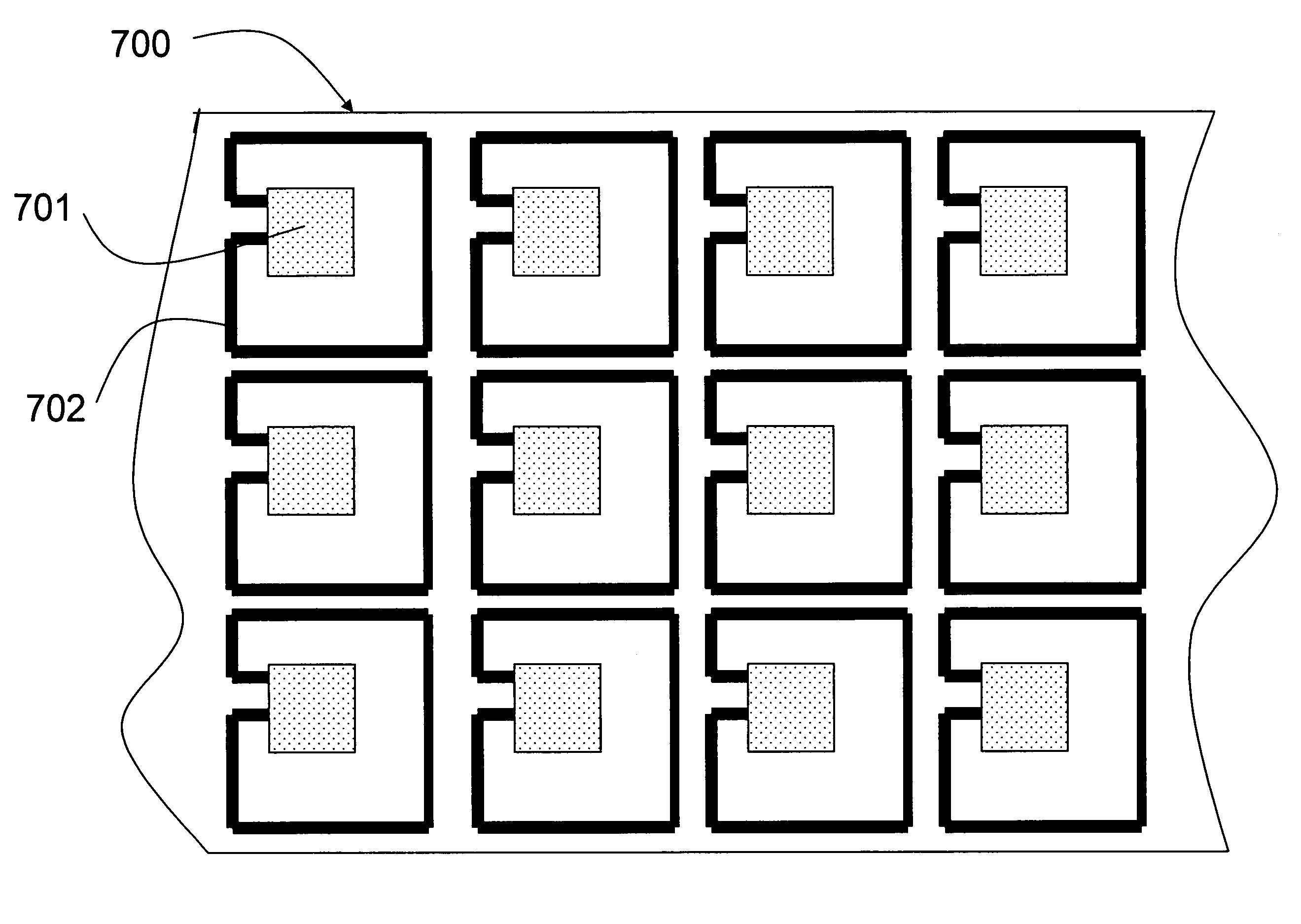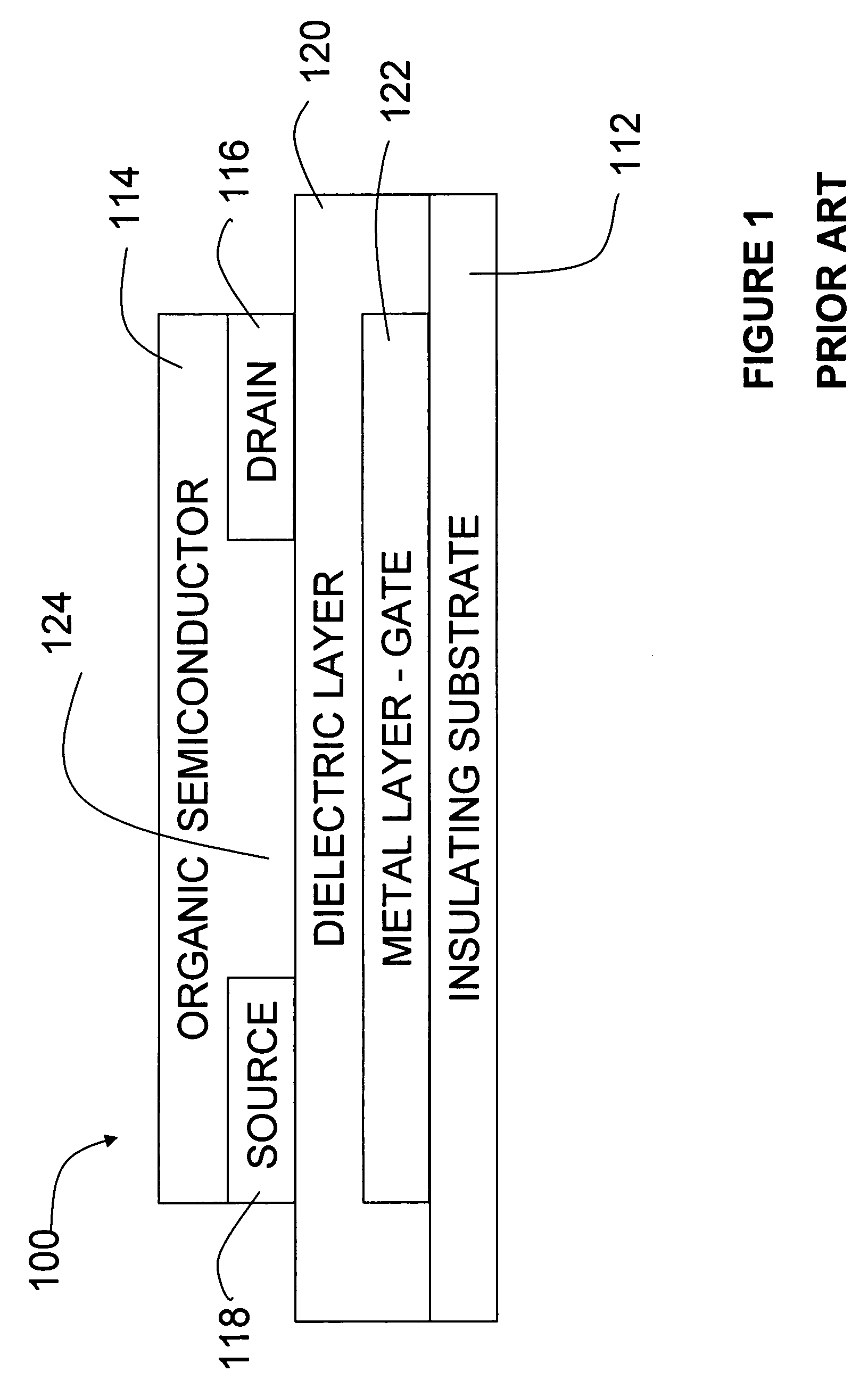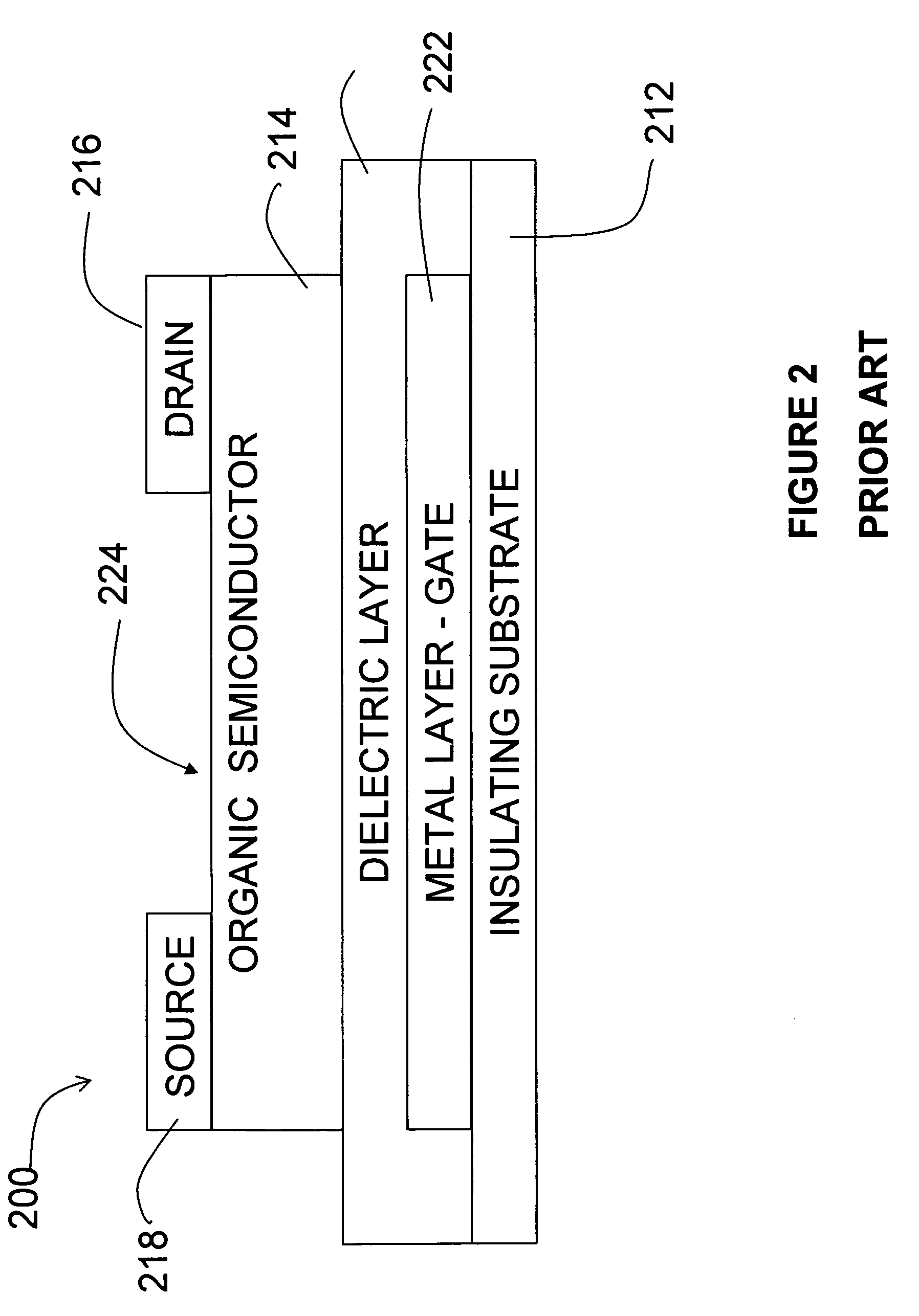Laser ablation method for fabricating high performance organic devices
a high-performance, organic technology, applied in the field of laser ablation method of fabricating high-performance organic fets, can solve the problems of limiting the depth to which laser energy can perform useful ablation, and achieve the effect of improving resolution
- Summary
- Abstract
- Description
- Claims
- Application Information
AI Technical Summary
Benefits of technology
Problems solved by technology
Method used
Image
Examples
Embodiment Construction
[0026]Referring to FIG. 4, a system for laser ablation of a metal layer of a top gate organic transistor is shown. The light from an excimer laser 401 is appropriately blocked by photomask 402, and impacts the metal layer 403 on insulating substrate 404 where there is an opening in the photomask 402. The light energy is of appropriate wavelength, absorption depth, pulse width, and repetition rate as to vaporize the metal where the light impacts on the metal. Laser ablation can typically ablate line width of 10 μm and higher. In one embodiment of this invention, the metal layer 404 is made unusually thin, 20 nm to 60 nm, in order to attain a capability to ablate much finer lines, in the order of 2 μm to 4 μm.
[0027]FIG. 5 shows the same system described above when applied to the definition of the channel on a bottom gate, bottom contact device. In this case, the metal layer 518 being ablated is on top of dielectric layer 520.
[0028]FIG. 6 shows the same system described above when appl...
PUM
 Login to View More
Login to View More Abstract
Description
Claims
Application Information
 Login to View More
Login to View More - R&D
- Intellectual Property
- Life Sciences
- Materials
- Tech Scout
- Unparalleled Data Quality
- Higher Quality Content
- 60% Fewer Hallucinations
Browse by: Latest US Patents, China's latest patents, Technical Efficacy Thesaurus, Application Domain, Technology Topic, Popular Technical Reports.
© 2025 PatSnap. All rights reserved.Legal|Privacy policy|Modern Slavery Act Transparency Statement|Sitemap|About US| Contact US: help@patsnap.com



